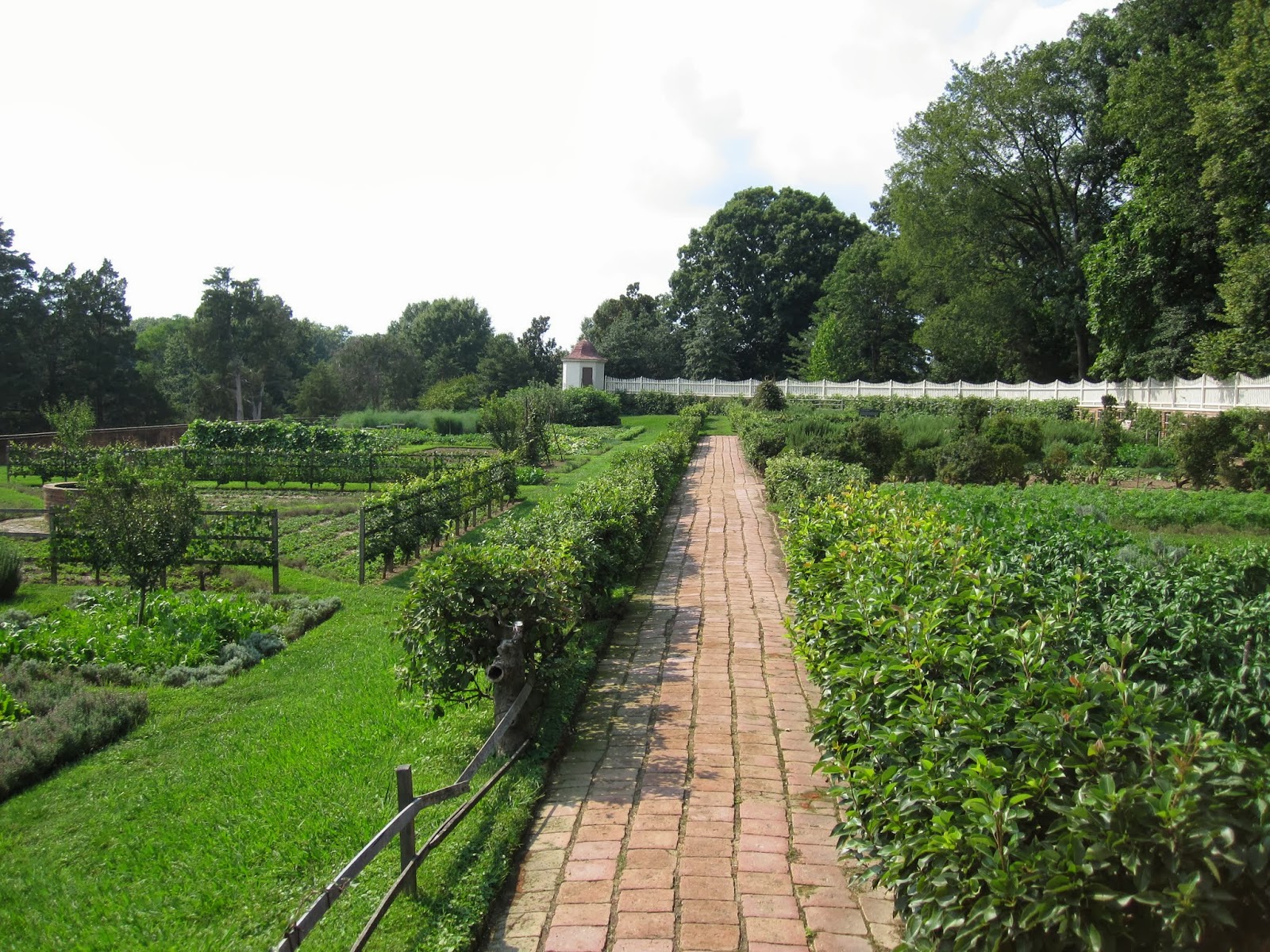As fascinating as we found the house, grounds, farming operations, and history of slaves at Washington's home, almost all of my pictures were of the gardens (Pictures were not allowed in the main house). I kept thinking how much my brother (the landscaper) would enjoy the meticulous detail and grand scope of the vegetable plots, fruit orchards, and flower gardens sprawling across the property.
I knew from earlier conversations with my brother about espaliered trees, and I was very excited when, upon finding them in one of the gardens, I not only recognized the technique, but remembered the word for it (although I still habitually spell it with too many L's). These trees, adhering to historical practice, were being trained to the horizontal spars of the fence with strips of rawhide.
 |
| The white structure at the end of the fence is one of several composting toilets, called "necessaries." They are not for public use. |
I felt a little conflicted about the estate, for all of the usual reasons. The contrast between conditions for the slaves and conditions for hired whites (let alone for the Washington family) was striking. The above picture shows the quarters for the gardener, a white man. A space of roughly the same size would have been occupied by a large slave family, or as many as ten individuals. Many of the docents and staff will eagerly expound upon how Washington considered himself, first and foremost, a "simple farmer," but having met and known many actual, modern farmers, I know better. He was a great military leader, and a very intelligent man, but he was no farmer. He was a plantation executive; the work was all done by others, usually at no cost to him.



No comments:
Post a Comment